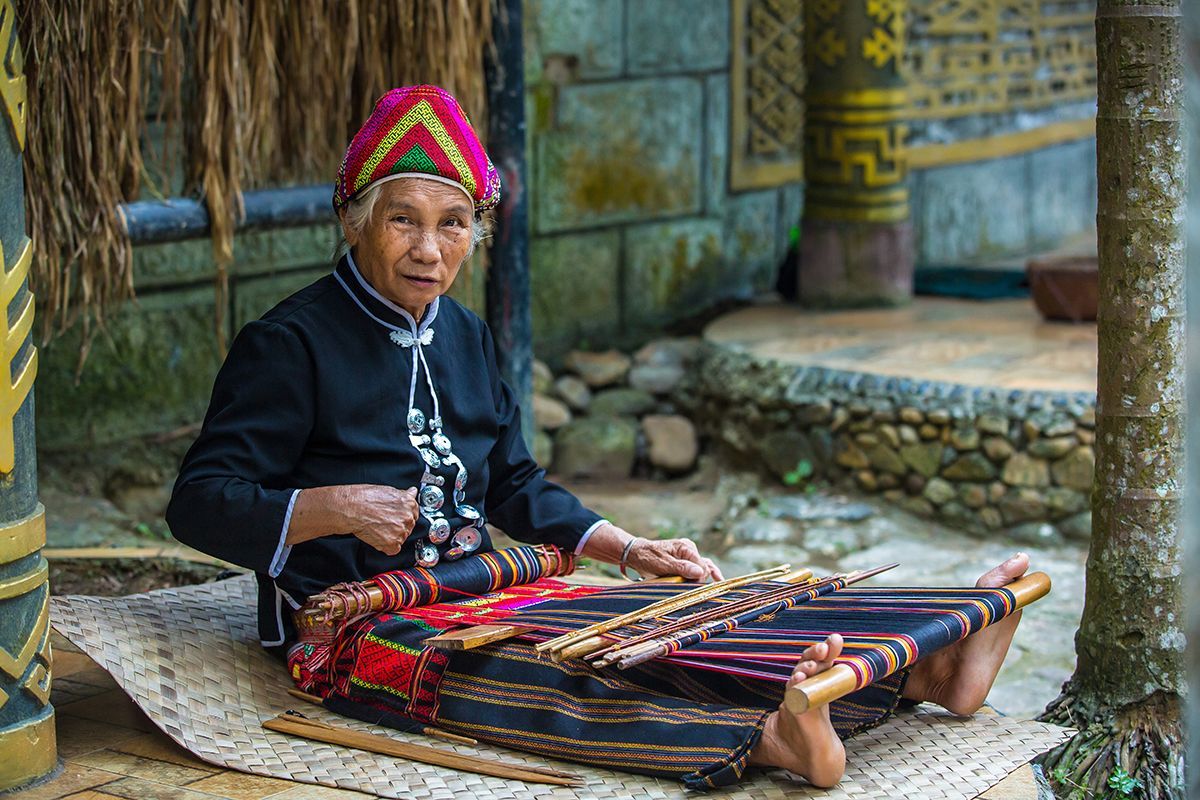© This article is an extract from Paul Hattaway's epic 656-page China’s Book of Martyrs, which profiles more than 1,000 Christian martyrs in China since AD 845, accompanied by over 500 photos. You can order this or many other China books and e-books here.
1951-1956 Persecution of the A-Hmao Church
1951 - 1956
Zhaotong, Yunnan
Hundreds of A-Hmao believers meeting on a hillside at Kopu in 1948.
The A-Hmao ethnic minority group straddle the mountainous border region between Guizhou and Yunnan provinces. Commonly called the Da Hua Miao (‘Big Flowery Miao’) by the Chinese, they call themselves A-Hmao in their own language. For centuries the A-Hmao were despised and oppressed by the Chinese and their Nosu neighbours, who bullied them by “seizing their land, taking slaves, and imposing unfair taxes on them. Nosu landowners customarily used the back of an A-Hmao slave to mount their horses.”[1]
When Samuel Pollard and other missionaries first brought the liberating message of the gospel to them in 1904, thousands of the poor, downtrodden tribesmen eagerly embraced the gospel. The 1917 translation of the New Testament into A-Hmao was a source of great uplift. Possessing a written script for the first time in their history, the A-Hmao found their worth in Christ and His Word. By the time the missionaries were expelled from China in 1950 the A-Hmao Church numbered more than 80,000 Christians.
After the removal of the missionaries the A-Hmao were left to lead the church by themselves. Zhu Huanzheng was given the administrative leadership of the believers at Zhaotong in northeast Yunnan Province. A Han Chinese believer, Zhu Shuiguang, was also involved with the work. In 1951 they were arrested with an evangelist named John Li when the Communists captured Zhaotong. The two Zhus and Li were tortured so inhumanely that they could not stand the diabolical treatment. One sad account says, “Zhu Shuiguang committed suicide in 1951 and John Li died in prison after just a few weeks. In the middle of the ‘50s Zhu Huanzheng was attacked in the Campaign to Root Out Counter-Revolutionaries, and committed suicide in 1956.”[2]
In 1954 the government concocted a sinister plan to destroy the faith of the A-Hmao at Sapushan by selecting 16 young church leaders and sending them to work in 16 different locations. The authorities believed that by separating them from their Christian environment, the youngsters would soon reject their faith. They were wrong. Not only did each of the 16 A-Hmao continue to follow Christ, they also influenced their workmates and in several locations small Christian fellowships started where there had previously been no knowledge of the gospel!
More martyrdom was to come to the A-Hmao Christians in the 1970s, but the systematic plan to obliterate the A-Hmao church in southwest China backfired on the Communists. Today there are at least 200,000 Christians among the A-Hmao.[3] They remain vibrant and enthusiastic followers of Christ.

1. Hattaway, Operation China, 26.
2. See Joakim Enwall, A Myth Become Reality: History and Development of the Miao Written Language, Vol.1 (Stockholm: Institute of Oriental Languages, 1996), 136.
3. See the A-Hmao profile in Hattaway, Operation China, 26.




